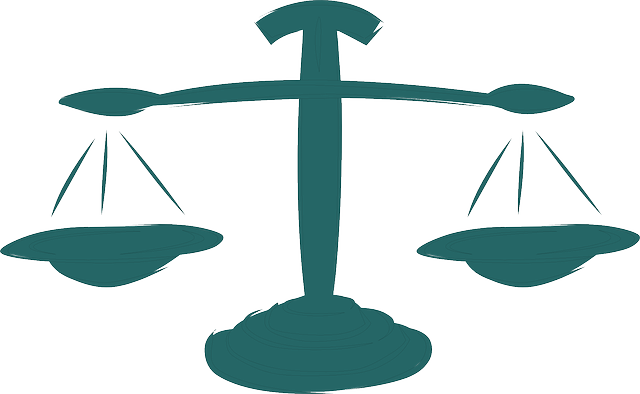Securities scams, leveraging deceit like Ponzi schemes, pose a significant threat in today's financial landscape. Law enforcement combats these frauds using diverse evidence including financial records, communication logs, expert opinions, and victim testimonies during criminal prosecution. In the digital age, advanced forensics tools help uncover sophisticated cybercrime techniques, expanding evidence types to include social media activities and online identities. Witness testimonies and victim impact statements provide powerful real-world examples of scammer tactics and harm, deterring future offenders and aiding in severe sentences. Prosecutors leverage financial records, transaction logs, emails, and communication records to secure convictions through Types of Evidence Used in Criminal Prosecution, ultimately holding perpetrators accountable and ensuring justice for victims.
“In the high-stakes world of finance, securities scams pose a significant threat to investors. This comprehensive guide delves into the intricate details of uncovering and prosecuting these fraudulent schemes. From common scam tactics like Ponzi schemes and pump-and-dump, to the digital footprints left by cybercriminals, we explore essential elements of criminal investigation.
Learn how legal documentation, digital evidence, witness statements, and financial records play pivotal roles in bringing perpetrators to justice. Discover the types of evidence used in securities fraud cases, offering a holistic view of the criminal prosecution process.”
- Unveiling Common Securities Scams: A Closer Look
- The Role of Legal Documentation in Prosecution
- Digital Traces: Cybercrime Evidence and Techniques
- Witness Testimonies and Victim Impact Statements
- Types of Financial Records Used Against Culprits
Unveiling Common Securities Scams: A Closer Look

Unveiling Common Securities Scams: A Closer Look
Securities scams are a prevalent issue in today’s financial landscape, preying on investors with promises of quick wealth and high returns. From elaborate Ponzi schemes to fake investment opportunities, unscrupulous individuals and organizations often use sophisticated tactics to deceive the public. To combat these fraudulent activities, law enforcement agencies carefully examine various types of evidence used in criminal prosecution. These include financial records, communication logs, expert testimonials, and even victim testimonies. By delving into all stages of the investigative and enforcement process, authorities aim to expose these scams and bring perpetrators to justice.
Understanding the tactics employed by these fraudsters is essential for investors to protect themselves. Recognizing red flags such as unrealistic investment promises, high-pressure sales techniques, and lack of transparency can help individuals steer clear of potential scams. Moreover, an unprecedented track record of successful prosecutions serves as a deterrent, sending a strong message that securities fraud will not be tolerated.
The Role of Legal Documentation in Prosecution

In securities scams, the role of legal documentation is pivotal for prosecution. Effective investigations rely heavily on gathering and analyzing various types of evidence used in criminal prosecution. These can include financial records, contracts, correspondence, digital communications, and expert witness testimony. By examining these documents, authorities can reconstruct fraudulent activities, establish intent, and link perpetrators to illegal actions. In high-stakes cases, achieving extraordinary results often hinges on the quality and quantity of evidence presented.
Legal documentation plays a crucial role in winning challenging defense verdicts. Prosecutors must demonstrate beyond a reasonable doubt that securities fraud has occurred. Well-prepared and organized documents can significantly strengthen this argument. The detail and context provided in these records enable jurors to understand complex financial schemes and make informed decisions. This, in turn, increases the likelihood of securing convictions, ensuring accountability for those involved in these fraudulent activities.
Digital Traces: Cybercrime Evidence and Techniques

In today’s digital era, securities scams have evolved to include sophisticated cybercrime techniques, leaving behind intricate digital traces that serve as crucial evidence in criminal prosecutions. These traces include electronic records, such as emails, instant messages, and metadata, which can provide a detailed account of fraudulent activities. Advanced forensics tools enable investigators to uncover hidden conversations, access deleted files, and trace online communications, offering insights into the minds and actions of perpetrators.
The types of evidence used in criminal proceedings against scam artists have expanded beyond traditional methods. Law enforcement agencies now employ cutting-edge techniques to analyze digital data, ensuring a robust case even in high-stakes cases across the country. This comprehensive approach includes the examination of social media activities, financial transactions, and online identities, leading to complete dismissals of all charges or significantly altered outcomes for offenders caught using these advanced evidence gathering methods.
Witness Testimonies and Victim Impact Statements

In securities scams, witness testimonies and victim impact statements play a pivotal role as types of evidence used in criminal prosecution. Real-life accounts from individuals who have been affected by these fraudulent schemes offer powerful insights into the manipulative tactics employed by scammers. These testimonials provide concrete examples of how victims were lured in, the promises made, and the devastating consequences they endured. By sharing their stories, survivors contribute crucial information that helps law enforcement agencies and prosecutors build robust cases against perpetrators.
Across the country, these statements have been instrumental in achieving extraordinary results in jury trials. The impact of hearing from direct victims can be profound, as it humanizes the case and allows jurors to grasp the full extent of the harm caused. This emotional appeal, coupled with concrete evidence, has led to severe sentences and set precedents for future prosecutions, serving as a deterrent for potential scam artists.
Types of Financial Records Used Against Culprits

In the pursuit of justice for securities scams, prosecutors rely heavily on types of evidence used in criminal prosecution to build strong cases against culprits. These include financial records, such as bank statements, tax returns, and accounting ledgers, which provide a detailed look into the activities of suspects. These records are crucial in revealing patterns of fraud, money laundering, or other illicit financial dealings that may have occurred across the country.
Additionally, financial transaction logs, emails, and communication records play significant roles as evidence. They can help establish intent, identify co-conspirators, and demonstrate the extent of deception involved in a particular scam. Whether through jury trials or alternative legal proceedings, these types of evidence are instrumental in ensuring that perpetrators face consequences for their actions and that investors receive justice.
Securities scams, often complex and sophisticated, require a multifaceted approach to combat. By examining common schemes, understanding legal frameworks, leveraging digital forensics, and considering the human impact, law enforcement can build robust cases. The diverse array of evidence types used in criminal prosecution, from documentation to cybercrime techniques and victim statements, plays a crucial role in bringing scammers to justice. Staying vigilant and empowering ourselves with knowledge are key steps in protecting our financial future.






